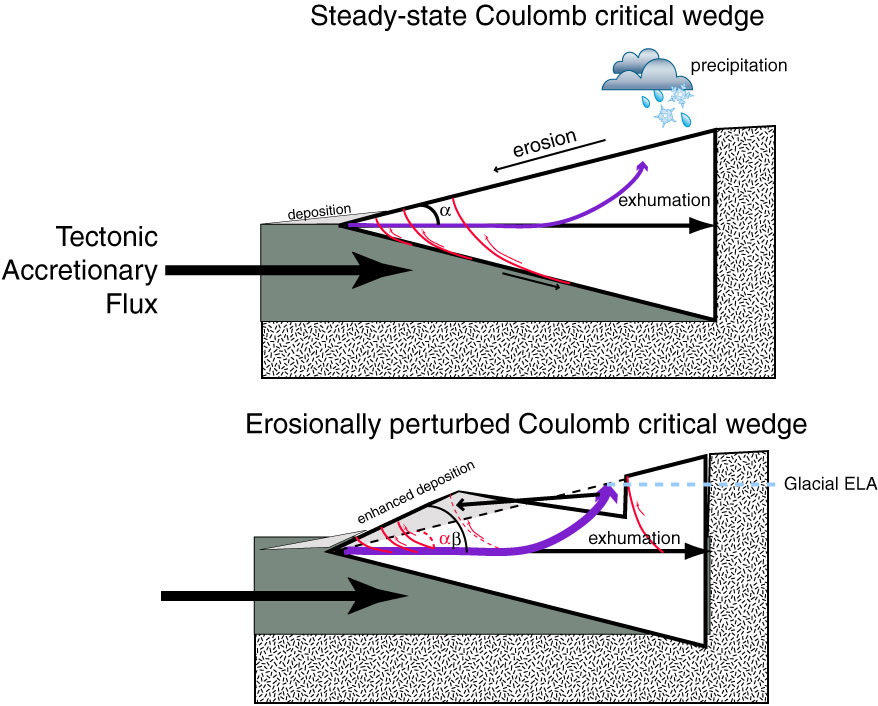
Figure F1. Conceptual model for the response of a one-sided critical taper wedge to a climate-driven erosional perturbation. Top: St. Elias orogen is in steady state during the Pliocene–late Pleistocene with tectonic influx and exhumation balanced by erosion and removal of material from the wedge. Lower: Mid-Pleistocene transition to longer-lived ice sheets and the formation of ice streams focuses erosion along the windward side at the glacial equilibrium line (ELA). Assuming that the tectonic influx remains steady, the onset of more intense glacial erosion increases exhumation rates (purple arrow) and rapid redistribution of mass to toe of orogenic wedge alters the internal stress loads, creating a new taper angle (β), shutting down active thrust sheets and repositioning active deformation to the new toe of the wedge (modified after Willet, 1999).

Close | Next | Top of page